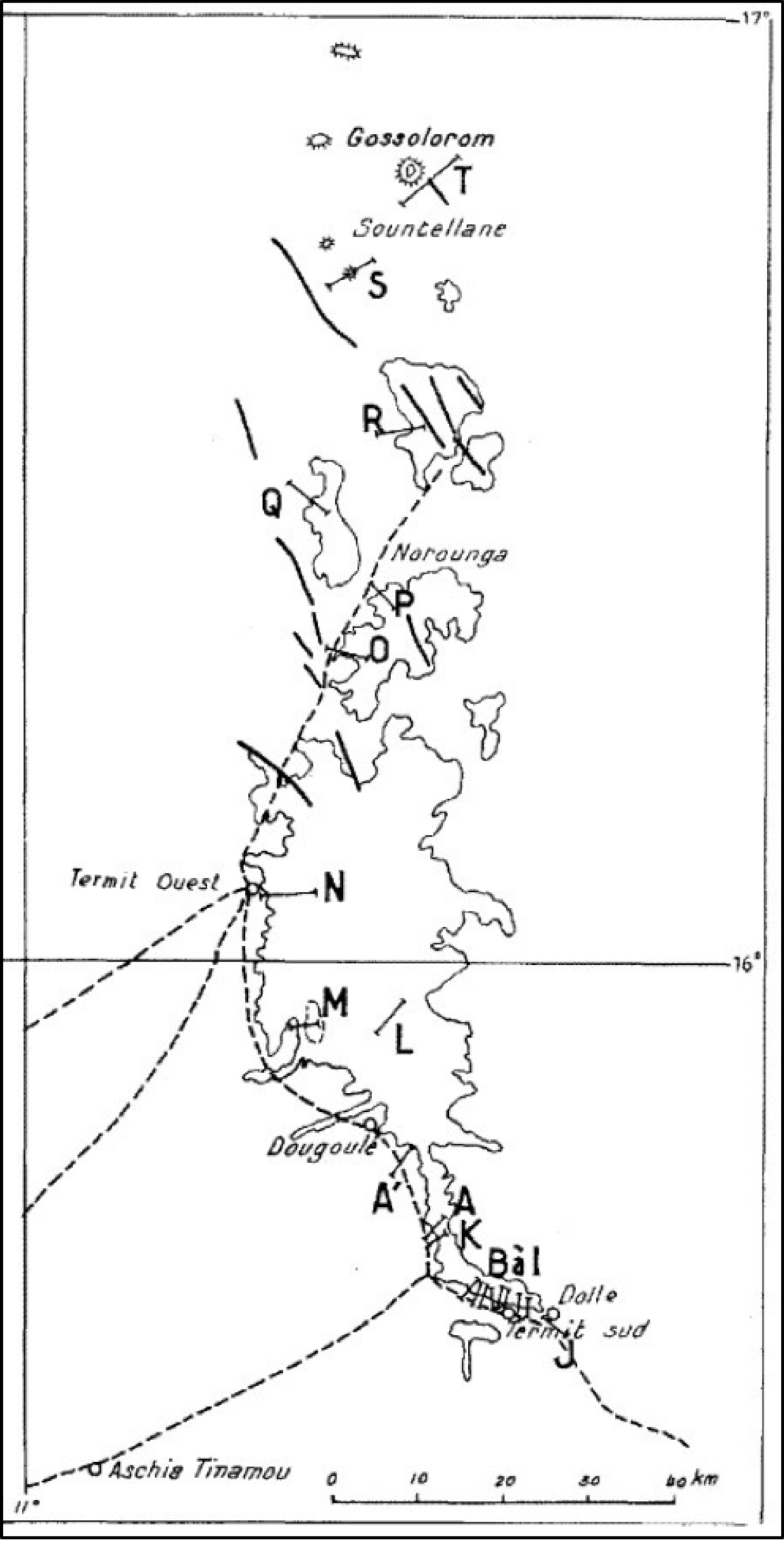Termit Fm
Type Locality and Naming
Named after Termit massif (Figs. 1 and 2), by Faure (1966, p. 340
References: Hubert, 1912; Faure, 1966; Fabre et al., 1983.
Equivalent(s): Bilma Fm and Galhama Fm in Niger. The Alteration zone of the upper part of the Termit Fm is equivalent to the Agadem Fm bauxite and kaolin alteration zone. Bauxite from Gaya and Kogabo (?) (Hubert, 1912). Alunite and kaolin from western Niger. In Nigeria, “Combe sandstone”, “Rima group”, “Upper sandstone”. Alum nodules from the Rima Gr of Sokoto(?).
[Figure 1. The Termit Massif (Source: Faure, 1966).]
Lithology and Thickness
Alternation of fine sandstone with coarse lenses, siltstones and kaolinitic clays. Presence of ferruginous platelets (Fig. 2). Levels rich in detrital muscovite. Quite fine bedding; oblique and cross-bedded stratification. At the Alteration zone of the upper part of the Termit Formation, the cycles close to the erosional paleosurface experience discoloring, kaolinization, alunitization and corrosion of quartz. Thickness: More than 300 m. The upper limit is often an erosional limit. The thickness of the alteration zone of the upper part of the Termit Fm is about fifty meters below the unconformity (the alunite can be found up to that depth).
[Figure 2. Section of the Termit Fm at the Termit Massif (Source: Based on Faure, 1966).]
Relationships and Distribution
Lower contact
Underlain by the Aschia-Tinamou Fm (Aschia Tinamou Fm)
Upper contact
Discordantly overlain by the Dollé Fm.
Regional extent
East Niger Rift Basin - Termit Sub-Basin - West
GeoJSON
Fossils
Silicified heteroxylated wood of Dicotyledonous Angiosperm (rare). Imprints with parallel veins of grasses or palms are probable. Ferruginized wood, with a fibrous structure reminiscent of palm trees.
Age
Depositional setting
Additional Information

